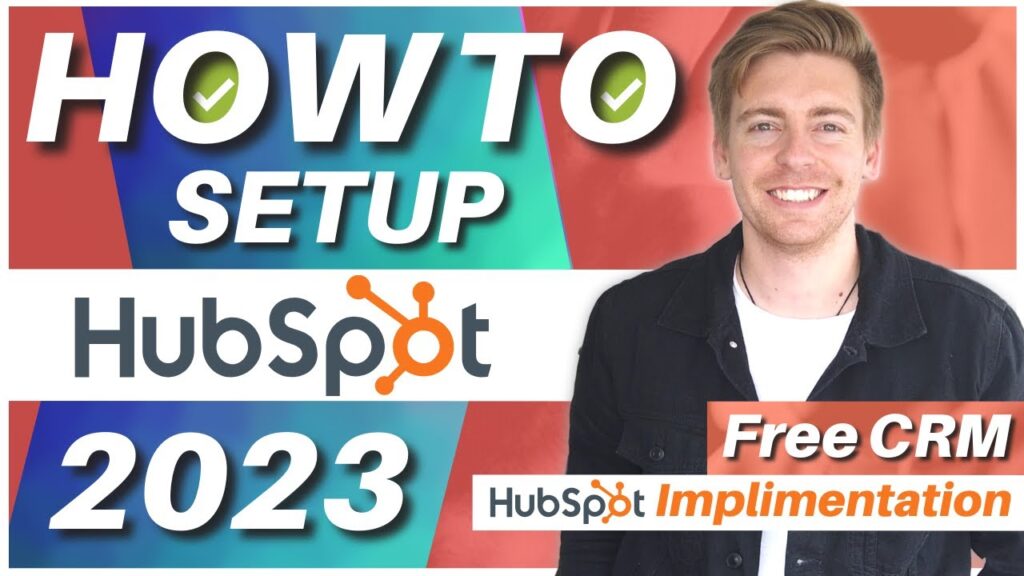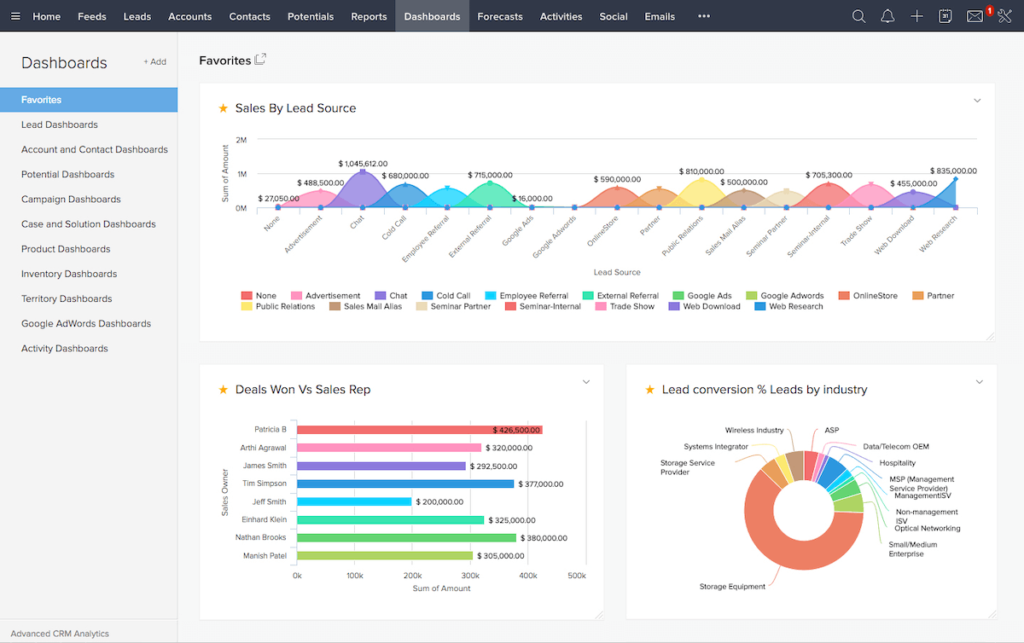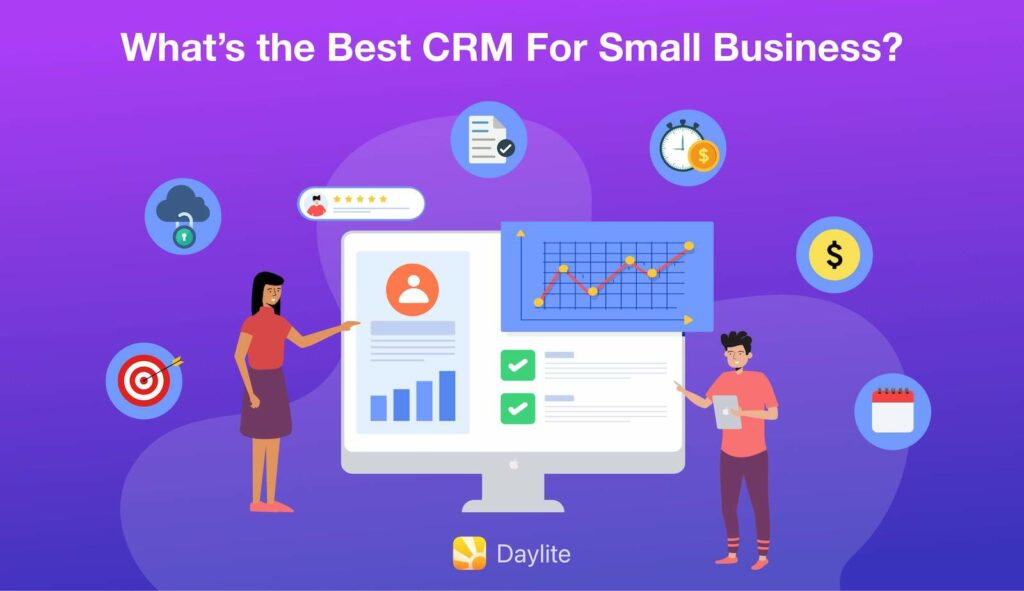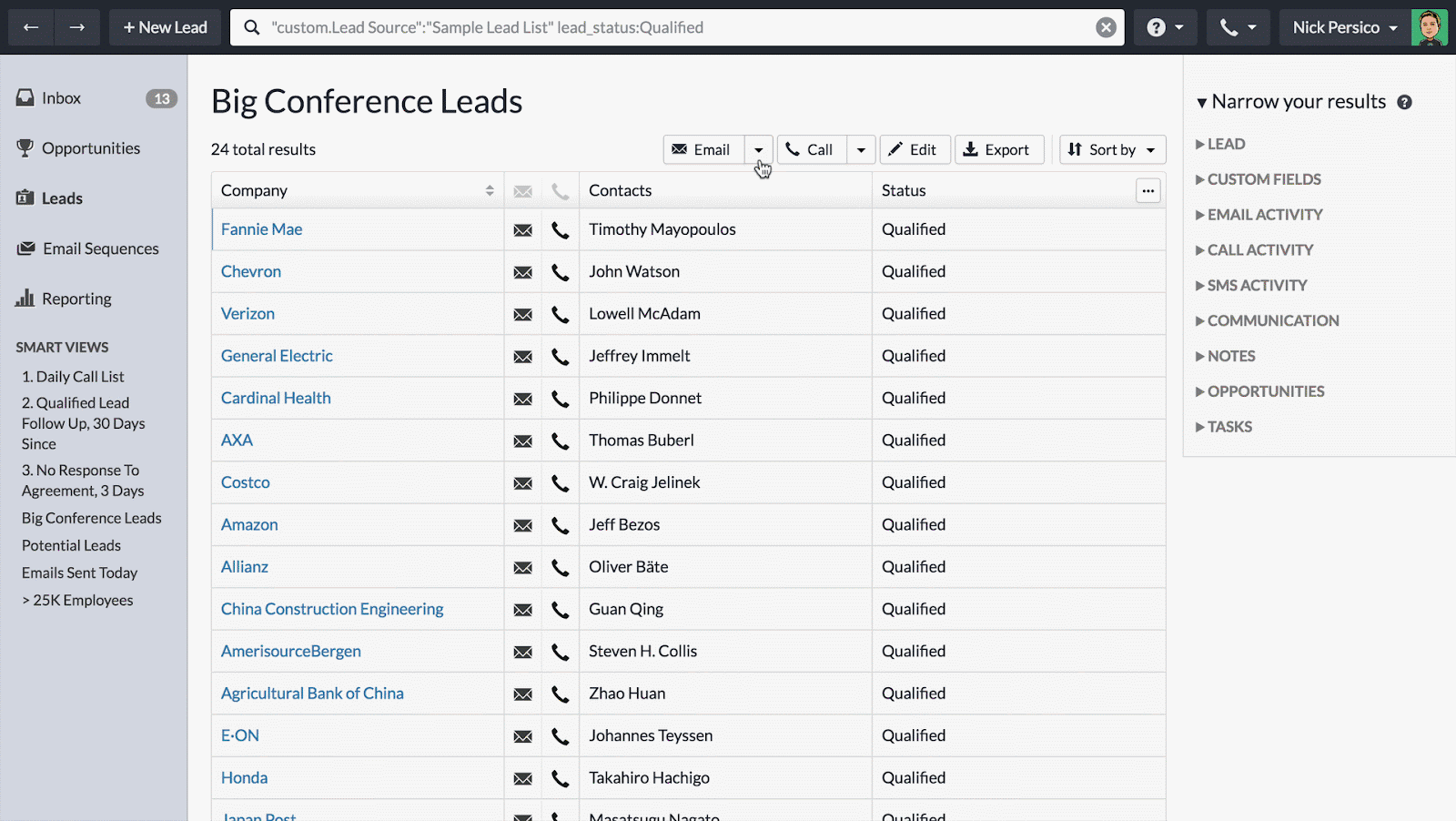
Supercharge Your Small Business: A Comprehensive Guide to CRM Setup
Running a small business is a marathon, not a sprint. You’re juggling a million things at once – from product development and marketing to sales and customer service. In the midst of all this hustle, it’s easy for crucial details, like customer interactions and sales leads, to slip through the cracks. That’s where a Customer Relationship Management (CRM) system comes in. Think of it as your central hub for everything customer-related, helping you organize, automate, and ultimately, grow your business. This guide will walk you through the entire process of small business CRM setup, from the initial planning stages to ongoing optimization. Get ready to transform the way you connect with your customers and boost your bottom line!
Why Your Small Business NEEDS a CRM
Before we dive into the ‘how,’ let’s talk about the ‘why.’ Investing in a CRM might seem like a big step, especially for a small business with limited resources. However, the benefits far outweigh the costs. Here’s why a CRM is essential:
- Improved Customer Relationships: A CRM centralizes all customer data, including contact information, purchase history, and communication logs. This gives you a 360-degree view of each customer, enabling you to personalize interactions and build stronger relationships.
- Increased Sales: By tracking leads, managing sales pipelines, and automating follow-ups, a CRM helps you close more deals and increase revenue.
- Enhanced Efficiency: CRM systems automate repetitive tasks, such as data entry and email sending, freeing up your team to focus on more strategic activities.
- Better Decision-Making: CRM platforms provide valuable insights into customer behavior, sales performance, and marketing effectiveness, allowing you to make data-driven decisions.
- Improved Customer Service: With readily available customer information, your team can quickly resolve issues, provide personalized support, and improve customer satisfaction.
- Scalability: As your business grows, a CRM can scale with you, accommodating increasing numbers of customers and team members.
Choosing the Right CRM for Your Small Business
The CRM market is vast, with a plethora of options available. Choosing the right one for your small business can feel overwhelming, but it doesn’t have to be. Here’s a breakdown of factors to consider:
1. Assess Your Needs
Before you start comparing CRM systems, take some time to understand your specific requirements. Consider the following questions:
- What are your primary business goals? Are you focused on increasing sales, improving customer service, or streamlining marketing efforts?
- What are your current pain points? What challenges are you facing in managing customer relationships and sales processes?
- What features do you need? Do you need sales automation, marketing automation, customer service tools, or all of the above?
- How many users will need access to the CRM? This will impact the pricing and scalability requirements.
- What integrations do you need? Do you need to integrate with your existing email marketing platform, accounting software, or other tools?
2. Evaluate CRM Features
Once you have a clear understanding of your needs, you can start evaluating the features of different CRM systems. Key features to look for include:
- Contact Management: The ability to store and manage customer contact information, including names, addresses, phone numbers, and email addresses.
- Lead Management: Tools for tracking and nurturing leads, including lead scoring, lead assignment, and lead source tracking.
- Sales Automation: Features for automating sales tasks, such as email follow-ups, appointment scheduling, and task management.
- Marketing Automation: Tools for automating marketing campaigns, such as email marketing, social media marketing, and lead nurturing.
- Customer Service: Features for managing customer support tickets, tracking customer issues, and providing personalized support.
- Reporting and Analytics: Tools for tracking key metrics, generating reports, and analyzing data to gain insights into sales performance and customer behavior.
- Integration Capabilities: The ability to integrate with your existing tools and platforms, such as email marketing software, accounting software, and social media platforms.
- Mobile Access: The ability to access the CRM from your mobile devices, allowing you to stay connected on the go.
3. Consider Pricing and Budget
CRM systems come in a variety of pricing models, including:
- Free Plans: Some CRM systems offer free plans with limited features and user capacity. These can be a good option for very small businesses with basic needs.
- Subscription Plans: Most CRM systems offer subscription plans based on the number of users and features. The price per user typically increases as you add more features or users.
- Custom Pricing: Some CRM systems offer custom pricing plans for businesses with unique needs or large user bases.
When setting your budget, consider the long-term costs of the CRM, including the initial setup costs, ongoing subscription fees, and any additional costs for training or customization. Don’t solely focus on the cheapest option; consider the value you’ll receive and the impact on your business.
4. Research and Compare CRM Systems
Once you have a clear understanding of your needs, features, and budget, you can start researching different CRM systems. Here are some popular options for small businesses:
- HubSpot CRM: A popular and user-friendly CRM with a free plan and a wide range of features.
- Zoho CRM: A comprehensive CRM with a variety of features and integrations, suitable for businesses of all sizes.
- Pipedrive: A sales-focused CRM with a visual pipeline and a user-friendly interface.
- Salesforce Essentials: A scaled-down version of Salesforce, designed for small businesses.
- Freshsales: A sales CRM with built-in phone and email features.
Read reviews, compare features, and consider free trials to find the best fit for your business. Pay attention to ease of use, customer support, and the availability of integrations. Consider your team’s technical proficiency and choose a system that is easy for them to learn and use.
Step-by-Step Guide to CRM Setup
Once you’ve chosen your CRM, it’s time to set it up. Here’s a step-by-step guide to help you get started:
1. Planning and Preparation
Before you begin the technical setup, take some time to plan and prepare. This includes:
- Define Your Goals: Clearly define your objectives for implementing the CRM. What do you want to achieve? This will guide your setup and help you measure success.
- Identify Your Data Sources: Determine where your customer data currently resides. This might include spreadsheets, email inboxes, or other systems.
- Clean and Organize Your Data: Before importing your data, clean it up and organize it. Remove duplicates, correct errors, and standardize formatting.
- Assign Roles and Responsibilities: Determine who will be responsible for managing the CRM, entering data, and training other users.
- Develop a Training Plan: Create a plan to train your team on how to use the CRM. This will ensure that everyone is on the same page and that the CRM is used effectively.
2. Account Creation and Configuration
The next step is to create your CRM account and configure it to meet your specific needs:
- Create Your Account: Sign up for your chosen CRM system and create your account.
- Customize Your Settings: Customize the CRM’s settings to match your business. This might include setting your currency, time zone, and language.
- Add Users and Assign Permissions: Add your team members to the CRM and assign them appropriate permissions. This will control their access to data and features.
- Configure Your Sales Pipeline: Customize your sales pipeline to reflect your sales process. This might include stages such as lead, qualified lead, proposal, and closed won.
- Integrate with Other Tools: Connect your CRM with your other tools, such as your email marketing platform, accounting software, and social media platforms.
3. Data Import and Organization
Now it’s time to import your customer data into the CRM:
- Import Your Data: Import your customer data from your existing data sources. Most CRM systems allow you to import data from spreadsheets or other files.
- Map Your Fields: Map your data fields to the corresponding fields in the CRM. This ensures that your data is imported correctly.
- Review Your Data: After importing your data, review it to ensure that everything has been imported correctly.
- Organize Your Data: Organize your data by creating segments, tags, and custom fields. This will help you easily find and manage your customer data.
4. Customization and Automation
Once your data is imported, you can start customizing and automating your CRM to streamline your workflows:
- Customize Your Fields and Forms: Customize the fields and forms in your CRM to capture the specific information you need.
- Create Custom Reports and Dashboards: Create custom reports and dashboards to track key metrics and gain insights into your sales performance and customer behavior.
- Set Up Automation Workflows: Set up automation workflows to automate repetitive tasks, such as sending email follow-ups, assigning leads, and updating deal stages.
- Integrate with Marketing Tools: Integrate your CRM with your marketing tools to automate marketing campaigns and track lead generation.
5. Training and Implementation
Proper training and implementation are critical for successful CRM adoption:
- Train Your Team: Provide comprehensive training to your team on how to use the CRM. This should include hands-on training and ongoing support.
- Provide Ongoing Support: Provide ongoing support to your team to answer their questions and help them troubleshoot any issues.
- Monitor User Adoption: Monitor user adoption and identify any areas where users are struggling.
- Gather Feedback and Make Adjustments: Gather feedback from your team and make adjustments to the CRM as needed.
Best Practices for CRM Success
Setting up a CRM is just the first step. To ensure its long-term success, follow these best practices:
- Keep Your Data Clean and Updated: Regularly review and update your customer data to ensure its accuracy. This includes updating contact information, removing duplicates, and adding new information as needed.
- Use Your CRM Consistently: Encourage your team to use the CRM consistently. This includes entering data, updating records, and using the CRM for all customer interactions.
- Track Key Metrics: Track key metrics to measure the success of your CRM implementation. This might include sales growth, customer satisfaction, and lead conversion rates.
- Regularly Review and Optimize Your CRM: Regularly review your CRM and make adjustments as needed. This might include adding new features, customizing your workflows, or improving your data management practices.
- Integrate with other business tools: Sync your CRM with other tools such as email marketing platforms, accounting software, and social media platforms to create a seamless workflow.
- Provide Regular Training: Provide ongoing training to your team on how to use the CRM and any new features that are added.
Troubleshooting Common CRM Issues
Even with careful planning and execution, you may encounter some common issues when setting up and using a CRM. Here’s how to troubleshoot them:
- Data Import Issues: If you’re having trouble importing data, double-check your data formatting, field mapping, and import settings. Ensure the data is compatible with your CRM.
- User Adoption Challenges: If your team is not using the CRM consistently, provide more training, address any usability issues, and highlight the benefits of using the CRM.
- Integration Problems: If you’re having trouble with integrations, make sure the integrations are properly configured and that there are no compatibility issues.
- Performance Issues: If your CRM is running slowly, optimize your data, reduce the number of users, or upgrade your CRM plan.
- Reporting Difficulties: If you’re having trouble generating reports, review your data, customize your reports, and ensure that you’re using the correct filters.
The Long-Term Benefits of a Well-Implemented CRM
The initial investment in a CRM setup is just the beginning. The real payoff comes with ongoing use and optimization. Over time, a well-implemented CRM can deliver significant long-term benefits:
- Increased Customer Loyalty: By providing personalized service and building stronger relationships, a CRM can increase customer loyalty and reduce churn.
- Improved Brand Reputation: A CRM can help you deliver consistent and positive customer experiences, which can improve your brand reputation.
- Increased Sales Revenue: By improving your sales processes and enabling your team to close more deals, a CRM can increase your sales revenue.
- Reduced Costs: By automating tasks and streamlining your workflows, a CRM can reduce your operational costs.
- Enhanced Productivity: By providing your team with the tools and information they need to be more efficient, a CRM can enhance their productivity.
- Data-Driven Decision Making: A CRM provides data and analytics which empowers your business to make decisions based on facts, leading to better outcomes.
In conclusion, setting up a CRM for your small business is a smart move that can transform the way you operate, connect with customers, and drive growth. By following the steps outlined in this guide, you can successfully implement a CRM and unlock its full potential. Embrace the power of customer relationship management and watch your business thrive! Remember that the key to success lies not just in the initial setup, but in consistent usage, data maintenance, and ongoing optimization. It’s an investment in your future. Good luck, and happy CRM-ing!


